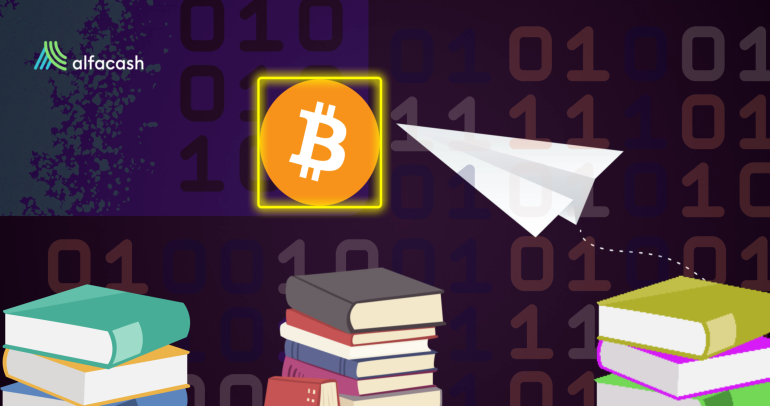The DeFi (Decentralized Finance) market value went from $26 billion locked up at the beginning of the year to $113 billion in November, according to Defi Pulse. This popularity is due, in part, to a large number of investors interested in DeFi products that offer relatively high returns. Among them is Liquidity Mining.
The promised returns for liquidity providers (LPs) in different market makers include juicy annual percentages in cryptocurrencies. However, if you’re interested in taking on this type of investment, it’s worth delving a little deeper into what it consists of and what its risks are.
What is Liquidity Mining?
In the past, we have established that liquidity mining can be considered only one system inside the niche of Yield Farming, which also includes other advanced methods to earn with DeFi tokens. In general, we can say that it consists of staking or lending cryptoassets to generate investment returns. Compared to traditional (and regulated) mechanisms, it’s much easier to invest here, as it’s still an uncontrolled space.

In liquidity mining, liquidity providers are incentivized to invest a certain amount of funds in the smart contract of a liquidity pool, in exchange for economic benefits. The purpose of this is to ensure that the pool has enough assets for use and exchange among users.
Thus, a liquidity provider deposits its tokens, usually in pairs (such as EHT/DAI for example) in a liquidity pool provided by a DeFi platform. Then, other traders use these tokens, and those who deposited their tokens receive the transactionA cryptocurrency transaction is an entry on the blockchain ledger, noting sender, receiver and number of coins transacted. More fees (distributedA distributed system is made of components that are running on different networked computers, which communicate and coordinate their actions... More among all liquidity providers).
The DeFi platform makes use of this mechanism to ensure that there’s enough liquidity for the platform’s exchanges. However, the higher the number of LPs and the lower the number of transactions, the returns for LPs decrease, as the distribution of rewards is commensurate with the total activity.
Therefore, to receive high investment returns from liquidity pools, it’s common for LPs to deposit large amounts of money in the most popular decentralized exchanges with high daily transaction volumes.
Liquidity Mining Risks
Impermanent Loss
One of the main risks faced by beginners when entering a liquidity pool for the first time is a possible Impermanent Loss. This means that the tokens you have locked in the pool may lose value as long as you can’t move them. Depending on when you wish (or are able) to move the funds, these losses may or may not be permanent.

Likewise, if you provided liquidity with an ETH/DAI pair in a specific distribution, for example, you might receive a reward that isn’t favorable to you. So, maybe you deposited X amount of tokens in equal proportion. Let’s say 50% in ETH and 50% in USDC. However, at the moment of withdrawing the funds, they can give you 30% in ETH and 70% in USDC, so to say. This is because the liquidity pool may need more ETH at that moment for the token swappers, so, you’ll probably lose money if the ETH price is rising.
Also, it may be the case that you receive rewards in tokens other than the deposited ones. These tokens generally serve for the governance of the projects but must be exchanged for other cryptoassets for other uses. Hence, their volatility may be much higher than the deposited pair and you may see your profits affected.
Project credibility
Another risk to which users are exposed is to encounter DeFi projects that present many problems (governance, scalability, etc.) and are destined to fail. Or, directly, they are designed from the beginning to get away with the investors’ money (scams – rug pulls).

It’s necessary to do your own research (DYOR) before investing. The authors of many projects that turn out to be legitimate over time are anonymous, so you should pay attention to other signs. Among them, study the white paper, roadmap, tokenomics, smart contract audits (if any), and what experts and the community at large are saying about it.
You also need to keep abreast of all developments and possible bad signals. To do this, you’ll need to join all the channels provided by the project. These usually include Twitter, Discord, and Telegram.
Code vulnerability
As DeFi is a novel technology, it’s common to find protocols that haven’t been developed efficiently. In the case of liquidity mining platforms, smart contracts may have weaknesses that can be exploited by hackers at any time.

Even if you can’t (or don’t know how to) read line by line the code with which these exchanges have been programmed, never trust projects that don’t have incentive programs for bug detection and aren’t transparent to the community about their code. Again, the publication of public audits is important.
How to choose a Liquidity Pool?
There are three main aspects to consider when choosing a Liquidity Pool:
- Reserve funds
A sufficient amount of liquidity in the pool will ensure that the par ratio deposited fluctuates less, which directly results in a lower risk of impermanent loss. It’s also important to consider decentralizationThe transfer of control from one central entity to numerous smaller entities. Generally, cryptocurrencies are decentralized. Every crypto transaction is... More: the liquidity shouldn’t come only from a couple of whales. In that case, if these large investors were to withdraw, liquidity would plummet and so would the pool’s profits.
- Trading volume
Choosing a liquidity pool with a high trading volume can be beneficial for both beginners and much more experienced investors. The higher the number of transactions on the platform, the higher the fees will be. And fees are where the collective profits will come from.

- Price divergence
The fluctuation of the price of one cryptoasset relative to another in the liquidity pool is called “price divergence”. It’s directly related to the impermanent loss because the latter can be reversed if the price divergence is also reversed. This is why it’s necessary to be very aware of the cryptocurrency market when investing, including possible news and changes that directly impact prices.
Most popular Liquidity Pools
In a previous article, we have named five platforms to perform yield farming and liquidity mining. But for 2021 we can mention at least three DEX platforms that increased their popularity and are currently at the top of the list:
- Uniswap: To exchange ERC20 tokens based on the Ethereum network.
- PancakeSwap: For exchanging on the Binance Smart Chain with BEP20 tokens.
- QuickSwap: In which tokens based on MATIC and Polygon Network can be exchanged.
Of course, there are many more and, as we have mentioned, it is very important to do your own research before investing.
Wanna trade BitcoinBitcoin is the first decentralized digital currency. It was created in 2009, by an anonymous founder or group of founders... More and other tokens? You can do it safely on Alfacash! And not forget we’re talking about this and a lot of other things on our social media.
Twitter * Telegram * Facebook * Instagram * Youtube * Vkontakte








